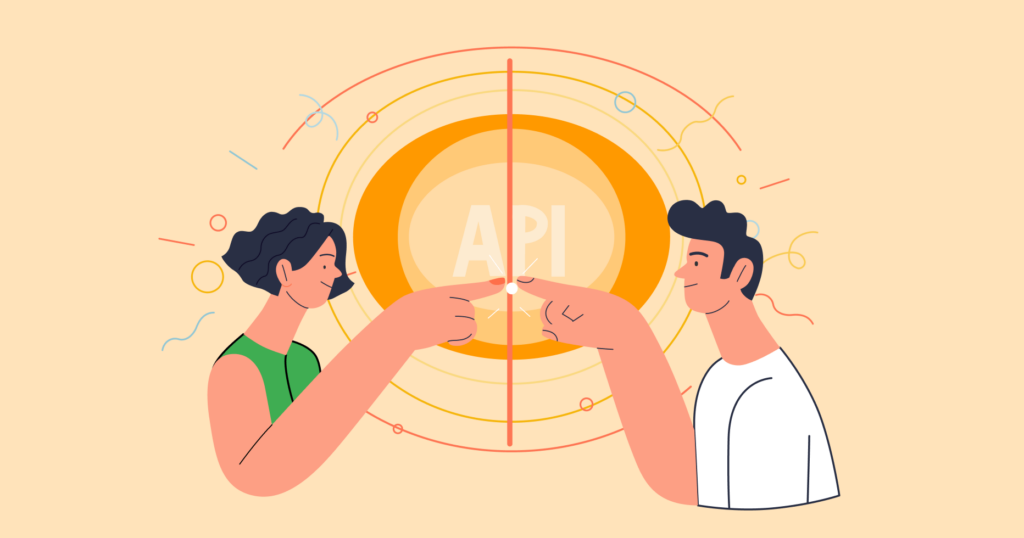Note: The article provides general information that concerns Internet marketing as a whole and is not exclusive to the Travelpayouts affiliate network.
Models of buying traffic
The main models of buying traffic are:
- CPC – Cost Per Click – One of the most common models for paying for traffic. In this case, an advertiser pays for a click on an advertisement, regardless of whether that click attracted a sale or another targeted action.
- CPM – Cost per Mile – This model is based on the actual purchase of a banner display, such as when the advertiser pays for “views” on the banner. This is most often calculated as cost per 1,000 impressions. (This model is sometimes also referred to as CPT – Cost Per Thousand.)
- CPA – Cost per Action – This model assumes remuneration payment only for results. In this case, advertisers only pay for the performance of a specific action, such as when the attracted visitor makes a purchase on the site. A paid action can be defined in many ways, hence specialized CPA models should be distinguished:
- CPI – Cost per Install – This model is a kind of CPA in which the advertiser pays for an action. In this case, the action is to install an application.
- CPL – Cost per Lead – In this case, the lead is paid when an application form is completed, the visitor leaves their phone number, etc.
- Other. A paid action can be anything the advertiser wants that can be tracked and calculated.
There are some other models of buying traffic, such as CPT (when an advertiser buys a specific impression time). However, all of them are far less common. Let’s explore the main models of buying traffic in more detail.
CPC
Pay per click is one of the most common ad buying models.
An example of this form of advertising is contextual advertising from Google Ads. Contextual ads allow you to get a lot of traffic, but are relatively expensive and risky in highly competitive niches.
You can launch a campaign in literally a couple of hours even with a minimal budget. However, this does not guarantee results. The final conversion from clicks to customers can be influenced in multiple ways:
- Target ads to the right audience;
- Use white- and black-lists;
- Bid on rates for clicks;
- And in other ways.
Contextual advertising is a common example of buying traffic using the CPC model, but it is not the only one. Native, display, and many other ad types can also be paid for using the CPC model.
Pros
- Targeted Traffic – Ads are clicked by those who are potentially interested in a product or service.
- Detailed Statistics – Google Ads and other advanced platforms offer detailed statistics.
- Projected Costs – Most often, advertising costs can be limited to specific numbers. However, the final results (how much you will earn on your traffic) are unclear.
Cons
- Difficulty Setting – It is easy to launch an advertising campaign, but setting one up to be effective is more difficult.
- The Risk of Going Negative – You must pay for clicks regardless of the results. So, in the end, you may spend more on generating traffic than you will actually earn from those visitors.
- Competition – Google Ads and some other advertising platforms use the auction model to set the price of clicks, which increases advertising costs. The cost of a click can exceed the minimum cost by dozens of times.
Google disclosed the figure to show on the first page. However, you can’t rely on the fact that it will always be low. As a rule, at the lowest rates, there are either very few impressions/clicks or very low-quality traffic. The optimal bid per click can vary significantly.
The ease of launching ads for clicks shouldn’t be embarrassing. It’s really easy to launch an advertising campaign, but ensuring profitability requires skills. CPC contextual advertising is an excellent model and traffic source if configured correctly.
CPM
Paying per thousand ad impressions is a model that came to the Internet from classical mass media, where the cost is often calculated for 1,000 people as well.
By working with this model, you will be able to more accurately predict your costs in advance (for example, by buying back 200,000 impressions for a set price). For the ad seller, this is a more stable option as well, which is often the basis for lower ad prices for advertisers. However, the downside is that you don’t know in advance exactly how much traffic this method will generate.
CPM advertising works more efficiently if you have a tested set of banners with a high CTR (click-through rate), since the final result from the campaign directly depends not only on impressions, but also on CTR.
The CPM model is quite specific and is not suitable in all cases. For example, this model is the most effective in the following cases:
- To increase brand awareness;
- To create an advertising campaign with the widest possible coverage;
- To interact with a specific audience and convey information to them (for example, about a promotion).
If the value for you is not in the information that is shown on the banner (such as informing visitors that you have a new logo), but in getting traffic, then when working with this type of advertising, you need to monitor the CTR.
Pros
- Highly predictable ad spending.
- With a high CTR, it can be cheaper than other ad formats.
Cons
- Repay for impressions, even if a specific visitor has already seen your ad. For example, if the site has a large amount of regular visitors, all of them will be shown your ad again. This increases the risk that your ad campaign will be less successful.
- Traffic quality – ads can be shown to bots. This can occur in other cases. However, in the case of CPM, it is more difficult to check the quality of your traffic, since you pay for the traffic on the side of the seller.
The CPM model is used not only through ad networks, but directly by bloggers. Such ads are often sold in packages (such as 80,000 impressions) and simultaneously with your banner. Other ads may be shown, such as your ad and two others. In such cases, you know for sure that you will receive the agreed amount of impressions for your banner in the end.
Some bloggers sell ads for a period of time, such as one month. In this case, CPM can be a great tool for calculating and comparing different websites. For this, you can divide the average number of impressions by the total cost and compare the final cost of 1,000 impressions on different websites.
CPA
Paying for the action means that you pay only if you get what you need, for example:
- Sales;
- Application installations;
- Form completions;
- Or something else.
CPA is a predictable financial model for rewards, as you don’t pay if the desired result is not achieved. The success of this model depends on:
- Who you pay and how much, if several partners interacted with the client;
- How long you assign the client to the partner who attracted him/her;
- What types of traffic you are working with;
- And other factors.
The commission (how much you pay the traffic owner) also affects your final results. You can make the “cheapest” traffic for yourself and get nothing in the end, since the traffic owners will not be interested in working according to such a commission rate.
There are no universal conditions that would allow everyone to always work effectively through the CPA model. Conditions need to be worked out depending on your product and goals.
Pros
- Do not pay if there are no results. You do not bear the cost of traffic that did not lead to the targeted action.
- You get high-quality traffic. Partners are interested in attracting visitors who will take a specific action, which means partners work toward your goals and not just to increase the number of clicks or impressions.
Cons
- Time consuming to start.
- Technically complex work model.
- There is a risk of fraud.
When using the CPC model, you can independently attract traffic to your site immediately, while using the CPA model will require a technical adjustment of your project. Without making this adjustment, it will be impossible to assign the committed actions to partners. Working through an affiliate network mostly solves this problem, as specialists help to set up the integration.
Since publishers receive income only for the result, there is room for fraudulent activities. For example, if you pay for completed forms, a webmaster can attract motivated visitors that will not become your clients, but will fulfill the conditions for receiving a specific reward. Competent traffic rules, as well as control over quality, will help to avoid this issue.
What model should you use to buy traffic?
Based on the goals of any commercial business, to make a profit when working with traffic, your task is to get as many sales (or other results) as possible for the lowest possible price. Other companies are striving for the same. We will analyze the best approach with an example.
Booking.com drives traffic online in a variety of ways:
- CPC – Buying ads on Google Ads and other networks
- CPA – Paying for targeted traffic from partners when someone books a hotel
Aviasales, Hotels.com, and many other brands do the same: buying ads and allowing partners to promote their services based on the CPA model.
When it comes to contextual advertising, brands often have entire teams to work with traffic, since launching a profitable advertising campaign is an entire art form. It’s the same with the CPA channel.
CPC and CPA, in this case, are not competing models. You also do not need to choose just one. You can combine these and other models to attract as many sales as possible for the smallest possible budget.
Paying for results using the CPA model has downsides as well. If you can attract the same traffic in another way (for example, through CPC), then you need to compare the cost of this method and your CPA channel. You should also estimate how much coverage you are getting.
The question can also be viewed from the other side in terms of the availability of traffic. Some webmasters monetize their websites using various methods, but there are also many who work with only one monetization type. For example, some webmasters only use Google AdSense, while others only use the CPA model. If you focus on only one model, you may miss out on a big piece of the market share.
It is more profitable for publishers’ sites with high-quality traffic, whose audiences make purchases more often, to use the CPA model. Since, in this case, the webmaster may generate a higher income. For an advertiser, this may mean more customer acquisition costs, but when using the CPC model, the customer may not have made a similar purchase or cost.
As part of the affiliate program, you can also offer various options for paying for traffic, including one that combines CPA and CPC. Some advertisers successfully combine both approaches, while some offer only CPC models in the affiliate program.
In addition to working effectively with contextual advertising, working with affiliate programs and CPA traffic requires a professional approach. It is impossible to tell partners that you will pay $10 per sale and expect to take over the market. A competent traffic policy, a fair rate, and a large set of affiliate tools will certainly do the trick and allow you to amass high-quality traffic and, thus, bolster sales or other actions required for your business.



